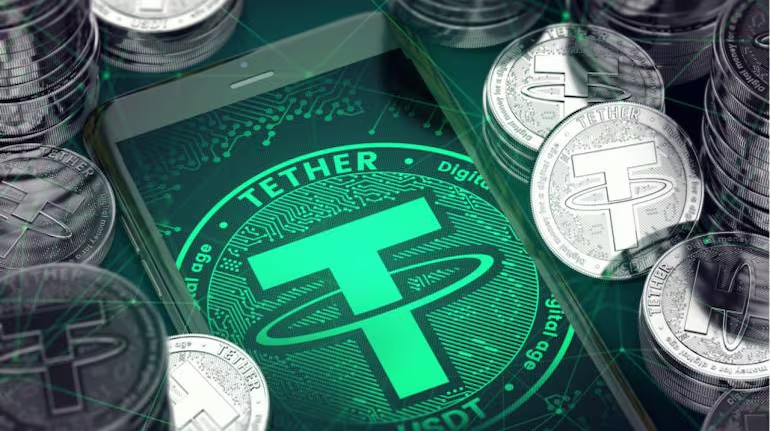In a space like logistics and supply chain, speed, efficiency, and cost efficiency are indispensable, and stablecoin payments in logistics are emerging as a game changer. The interpreter said that by employing blockchain-based, dollar-pegged digital currency (stablecoins) for cross-border B2B payments, logistics companies can streamline invoicing, settlement, and cash flow, and eliminate friction from global freight transactions.
Why Logistics Needs Stablecoin Payments
Existing wire transfers/fx conversions are slow (3-5 days to settle), expensive and opaque in terms of fees and FX margin to freight forwarders, carriers and customs brokers, etc. Blockchain-backed stablecoins change that paradigm:
- Quicker settlements: B2B stablecoin payments can be settled and cleared in less than an hour, any time, any day, including holidays. That’s especially compared to 6.6%+ in legacy remittances.
- Lower fees: Transfers can cost <3%, vs. 6.6%+ + with legacy remittances.
- Full transparency: Permanent records stored in blockchains can quickly create audit trails, lowering fee opacity.
These advantages make stablecoin logistics solutions more and more appealing to logistics companies in freight, warehousing, and customs business.
Real World Applications: Shipping, Customs, Freight
Mexico logistics players now have the flexibility to pay their carriers, customs brokers, and freight forwarders using a stablecoin instead of being at the mercy of bank cut‑offs and FX conversions. For supply chain partners already processing just‑in‑time deliveries, such predictable accelerated cross‑border rails can be game‑changing.
Some of the biggest companies, such as SpaceX/Starlink, are already using crypto payments for the supply chain to pay contractors in complex jurisdictions and settle almost instantly Modern Treasury.
Technology Behind Stablecoin Logistics Payments
- Blockchain rails: Stablecoins leverage secure Layer‑1 networks (e.g. Ethereum) to transact 24/7 with crypto‑grade finality.
- Programmable: Smart contracts can program workflows—such as payment upon confirming delivery—improve reliability, and expedite compliance.
- Multi‑rail integration: Logistics treasuries can be based on both fiat wires and stablecoin rails to tune for speed and cost.
Main Freight & Shipping Stablecoins
- USDC: 100% backed by USD reserves with strong regulation and widespread use in B2B trade.
- USDT: Globally ubiquitous, but reserve transparency has at times come under question.
- In addition, use cases of purpose‑built stablecoins such as PYUSD and USDP are emerging.
Also read: Stablecoin Payments in SaaS: Billing Customers in USDC or EURC
How Logistics Companies Benefit
Faster Payments
Settlement is instant (1 min to 1 hr) rather than a 3‑5 day wait. Settlements are possible any time, even on weekends or holidays.
Cost Reductions
Savings in fees that range between 50‑70%, as a stablecoin transfer costs below 3%.
Cash‑Flow Efficiency
Fast receipts translate to quicker reinvestment in inventory or operations.
Compliance & Traceability
Records on blockchain are immutable – this enhances auditability, streamlines reconciliation and reinforces AML monitoring.
Flexibility via Cryptocurrencies
They are digital tokens, but logistics companies can easily cash out into fiat (e.g, USD) immediately, giving them real-world use in addition to the benefit from blockchain.
Product Spotlight: TransFi for Logistics
TransFi, a global payments provider, has integrated stablecoin rails across its suite of products, which includes custom‑built solutions for logistics businesses:
- TransFi Payouts provides B2B disbursements to carriers and brokers in the form of USDC or USDT, offering wallet or on‑chain settlements.
- TransFi Collections allows logistics providers to invoice global clients using stablecoin or fiat, with multi‑rail settlement held natively in currency‑specific wallets via payment links.
- TransFi BizPay features a centralised dashboard to manage funds between stablecoin and fiat channels—view transactions, convert positions at market rate, and reconcile with supply chains.
TransFi is capable of compliance, multi‑currency invoicing and fast FX conversion—serving as a powerful engine for logistics companies who want to roll out digital dollar payments in the supply chain.
Implementing Stablecoin Payments in Logistics
- Onboard wallets
Then there are fully regulated wallets from the likes of TransFi. - Define payout workflows
Write contracts that detail payment triggers based on digital confirmations (P.O.D. Scans, for example). - Automate settlement
Create TransFi APIs as on‑demand conversions (USDC → USD) as well as for funding accounts. - Ensure compliance
With building KYC/AML into TransFi, logistics operators can have full audit logs and be in line with regulations. - Integrate ERP/Accounting
Invoicing APIs of TransFi auto-reconcile with your system that you currently operate.
Challenges and Considerations
- Regulatory clarity around stablecoins is changing, but U.S. Efforts such as the GENIUS Act are encouraging infrastructure partnerships.
- Transparency in reserves is still essential; opting for stablecoins with strong auditing (e.g. USDC) is safer.
- On/off ramps: To avail any benefit, stablecoins must be converted to fiat, which requires infrastructure, and TransFi does this for Logistics operators.
- Building trust with the suppliers: Providing new stablecoin-based instant guaranteed payment options adds to the supplier’s reputational capital.
Conclusion
Stablecoin logistics services are an important development in applied blockchain logistics payments. With fast global settlement, XRP can be used as a bridge currency in cross‑border payments, reducing the time and cost associated with multi‑currency settlements and providing exposure to stablecoin, real‑time cash flows.
Services such as TransFi Biz Pay make it possible for logistics companies to easily harness these advances. For logistics vendors eager to improve operations and access global demand, the move to the stablecoin rails today is going to pay dividends for the future, or a competitive edge.
Frequently Asked Questions (FAQs)
What are stablecoins in logistics?
Stablecoins are digital tokens pegged to the dollar that are used in faster, cheaper B2B global payments for shipment and freight services.
How does the payment benefit of using stablecoin apply in logistics?
Being able to settle in minutes instead of days allows companies to reinvest cash more quickly in freight, warehousing or onboarding.
Can there be a conversion of stablecoins to USD from logistics service providers?
Yes–TransFi does instant conversion of USDC/USDT into dollars or any currency on other platforms that share the technology.
Is it safe to use stablecoins in cross‑border trade?
Yes — the blockchain provides an unchangeable audit trail, and regulated stablecoins have full reserve and strictly compliant information.
Do stablecoin Logistics solutions interact with my current logistics systems?
Yes – TransFi has APIs for direct integration into ERP, accounting, invoicing, and Treasury systems.
Table of Contents
Suggested Article
Explore our products

Make global payments at the speed of a click

Accept payments, remove borders.

Unlock Seamless Digital Currency Transactions Anywhere








.png)














